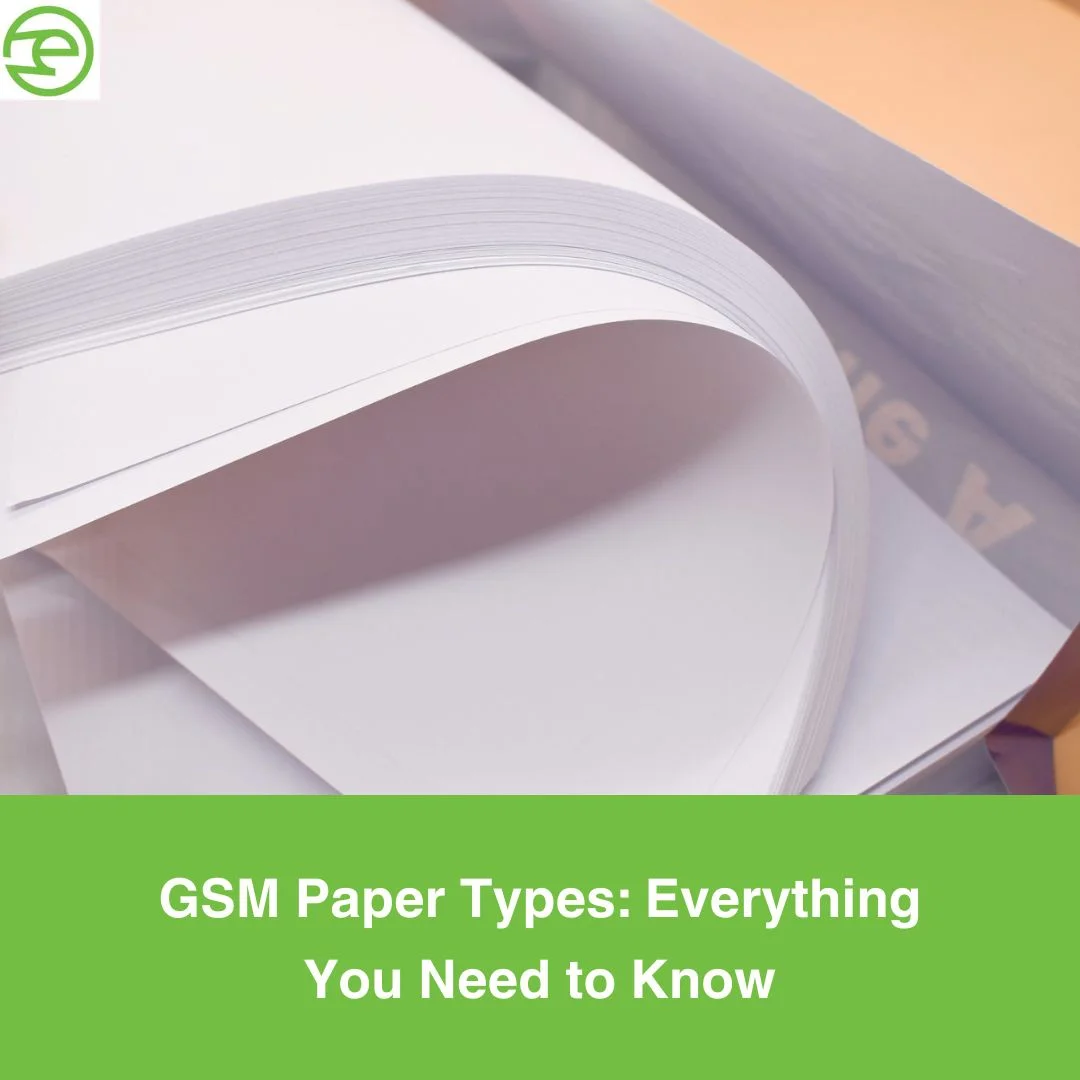GSM Paper Types: Everything You Need to Know
Now, that much about the dimension of newspapers, we will move on to the tangible and visual of paper products. GSM is key here. The term GSM refers to grams per square meter, and this notion represents the weight of the paper with attributes of its thickness, strength, and suitability for various purposes. Knowing the differences in GSM helps to determine the perfect print product for items such as business cards, brochures, or elegant invitations.
Why GSM Matters?
The feel of the paper is as communicative as the design printed on it in any print project. If heavy card connotes luxury and endurance, then lightweight sheets might connote something more transient and economic. However, deciding on which type of GSM paper to choose isn't a technical decision but one mainly based on branding.
Lightweight Papers (< 150 GSM)
1. Paper Thin (< 60 GSM): This class of paper is normally found in newspapers. Made to be used temporarily, it has a porous texture and low opacity, which perhaps do not communicate quality, but for the right context of reading today's news and recycling it tomorrow, it's just perfect.
![]()
2. Printing Use (60-120 GSM): The standard office (60-120 GSM) is great for day-to-day documentation for prints and copies made in standard office printers and photocopiers. Commonly, this category involves:
• 80 GSM: The quintessential weight for standard office paper.
•100 GSM: Offers a sturdier feel, commonly used for letterheads and stationery.
Midweight Papers (150-250 GSM)
Ideal for use in booklet or flyer cover applications, this bracket has an appreciable heft yet is quite flexible. Perfect for posters printed in this GSM range, giving required stiffness to stand still while being displayed in public but not unwieldy.
![]()
1. Marketing Collateral (150-200 GSM): Adept at making a solid impression for promotional materials. Here one finds:
• 160 GSM: Elevating the professionalism of the paper without excessive bulk.
• 200 GSM: Edging towards card stock, utilized for more premium flyers or brochure covers.
Heavyweight Papers (250-400 GSM)
1. Card Stock (250-300 GSM): The starting point for what could be considered cardstock, these papers are rigid to the touch and generally used, in most cases, for postcards, business cards, and single-page invitations. The 300 GSM paper gives absolute rigidity, particularly to those projects that need a sense of formality and significance.
![]()
2. Luxury Cards (>300 GSM): When only the most sumptuous touch will do, nothing comes close to our Luxury card range. They are usually used for premium business cards, wedding invitations, or high-end greeting cards. It's a feeling enunciating luxury, command, and importance.
Special Considerations in Paper Selection
GSM is only a part of this understanding in the complex decision process of paper selection. The matte or glossy finish, smooth or embossed texture, and even the brightness all combine in just the right proportions to have a profound impact on the final product and impress upon the GSM the desired impression.
Coating and Texture
• With a coated or uncoated finish, not only do you essentially change the feel of the paper, but you also broadly alter the brightness of the printed colors.
• Textured papers invite a sense of touch, implying craftsmanship and attention to detail.
![]()
Environmental Impacts
• Options include using recycled paper that will offset possible environmental concerns, though it often has a lower GSM than recycled fibers.
• Certified sustainable foresting, such as FSC (Forest Stewardship Council), ensures that paper quality is never at risk through ethics-based resource use.
GSM and the Printing Process
GSM of paper also influences the printing process, where those with higher GSM may not be perfect for printing using standard home or office printers, thus demanding professional printing services. Remember, GSM also affects ink absorption differently, whereby the ink used in the printing may be affected by different weights of GSM, altering the drying time or the volume required.
Ink Absorption and Color Fidelity
• Thicker papers may absorb more ink, which would mean a little more attention to detail in the printing process, just to make sure there was no loss of sharpness or color accuracy.
• Certain high-GSM papers may also require additional drying time to prevent smudging or transfer.
![]()
Professional Printing Requirements
• Some heavyweight papers must be fed through a printer one sheet at a time to avoid jamming or damage to the equipment.
• This is because a professional print house is likely to have the equipment and experience in printing across a range of paper GSMs to produce the very highest quality.
Conclusion
Choosing the correct GSM paper type is a nuanced decision blending art with science, aesthetics with functionality, and perception with practicality. Whether murmuring subtlety with an understated text sheet or shouting luxury with a dense cardstock, the GSM of a paper makes a profound statement before a word is read or a graphic is admired. An understanding of GSM's complexities and how they align with paper use is an indispensable tool for any print media connoisseur, marketer, or designer seeking to make an indelible impression in a world of fleeting digital messages.






